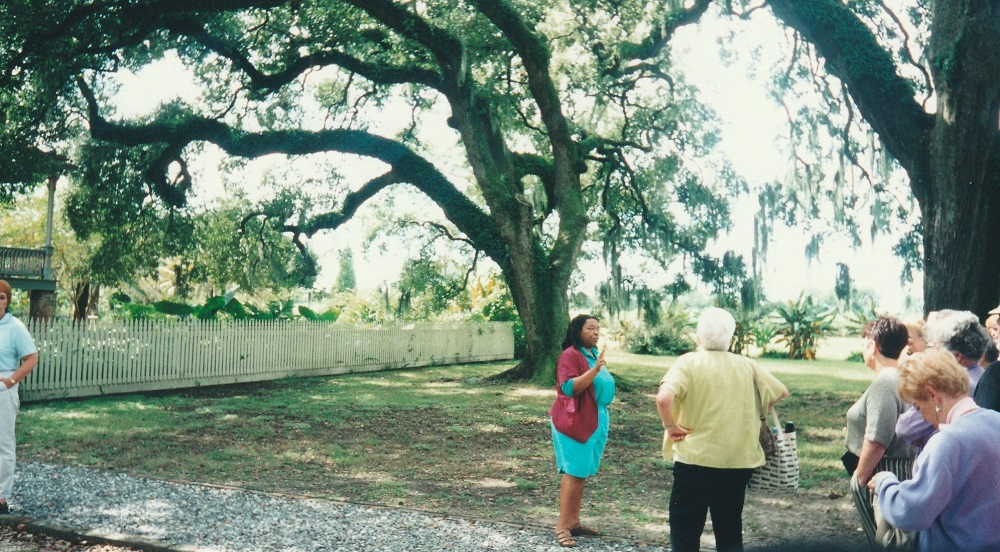
This morning, we slept in, and then got in the car and drove upriver to tour some plantations. There are a large number of old plantations up and down the river, and many of them have been refurbished and maintained as tourist attractions. You could spend weeks touring them all; we picked three for this trip. This day, we started with Laura, a Creole plantation.
The River Road, made up of several state highways, winds along the banks of the Mississippi from New Orleans to Baton Rouge. Laura is on the River Road, about halfway between the two cities.
The tour began with an introductory talk given by one of the two tour guides:

The group was then split into two groups, and we went with the other guide:

I've forgotten her name, but she had a charming Creole French accent. The house behind her illustrates certain features which we learned are characteristic of Creole plantations: the bright colors, the floor-to-ceiling windows, and the main entrance on the second floor. That last, actually, is characteristic of all New Orleans plantation houses, not just Creole ones - it's in case of floods. Also, all plantation houses face the river.
All of the plantation houses were similar in many ways; we were taken through the rooms of the house, which were furnished with period furniture, and the guides told us about plantation life in the 1800's, and details about the lives of the original owners, and what happened to the owners, and what happened to the house over the years, and that sort of thing.
I was interested to notice this plaque on the wall:
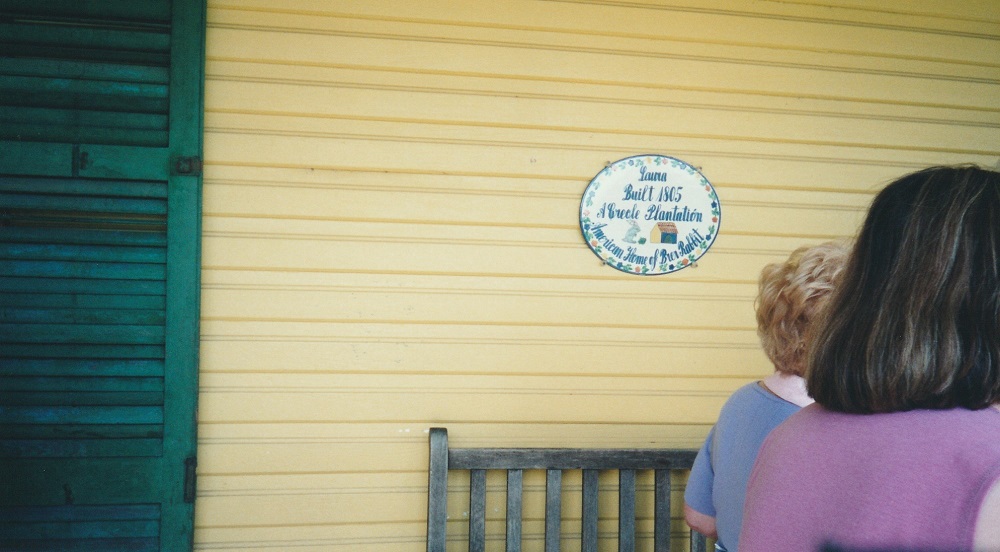
The small print at the bottom reads "American Home of Brer Rabbit." What happened, apparently, was this: In the 1800's, a visiting professor was intrigued by the folk tales told by the slaves on this plantation, who came from Senegal, in West Africa. He transcribed several of them, and later showed them to a friend of his, a man by the name of Joel Chandler Harris. Mr. Harris then rewrote the stories in the form in which we know them today.
Here's where the story gets interesting. Not long ago, a professor in Senegal - with no reference to, or connection with, the J. C. Harris stories - collected a number of native folk tales, and published them. And the stories are virtually identical with the Brer Rabbit stories.
This picture shows the fields out behind the big house, with some restored slave quarters visible in the distance:
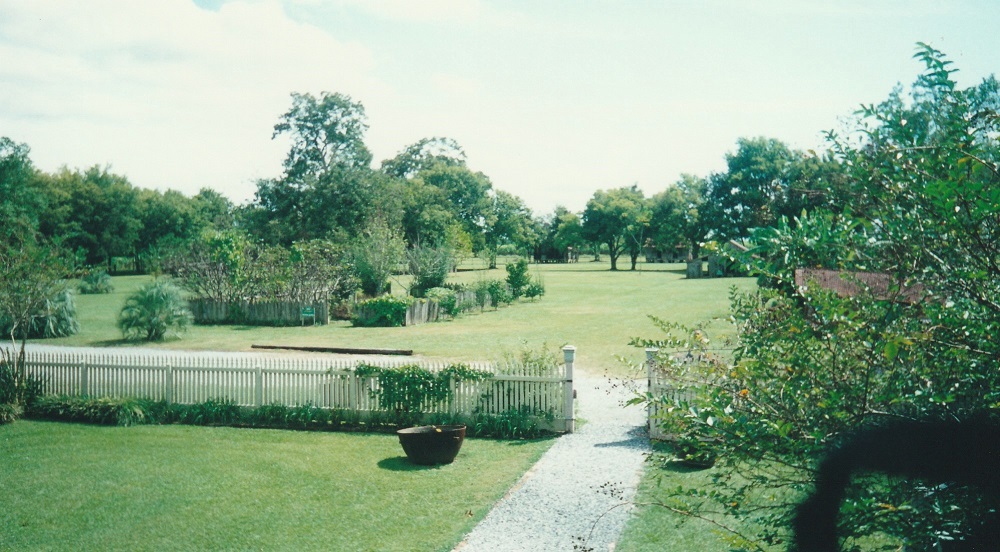
And this picture shows what the plantation was - and is - growing: sugar cane. As we drove through the Louisiana countryside, we saw miles of the stuff:
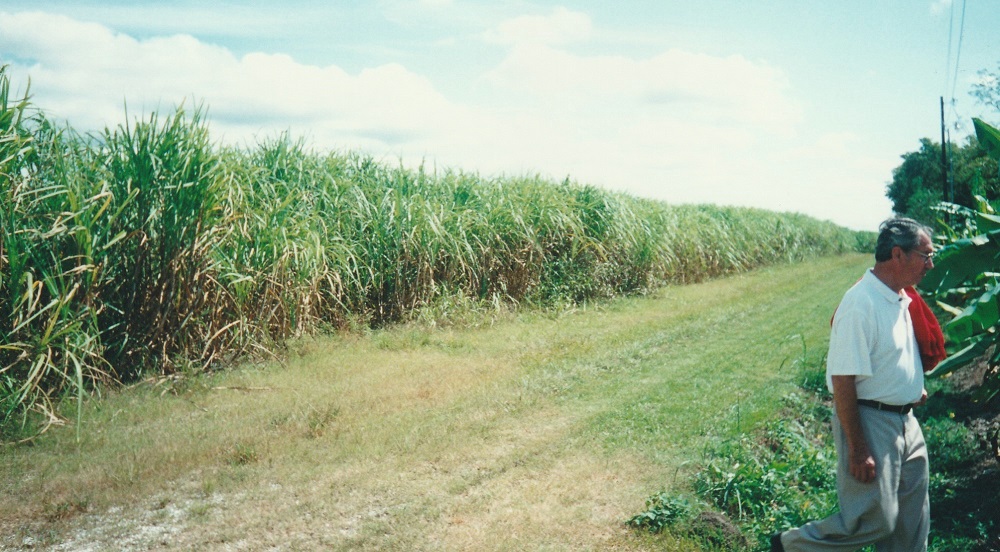
Here are some pictures that illustrate what I was talking about earlier. Here's the view from the road - no river, just levee:
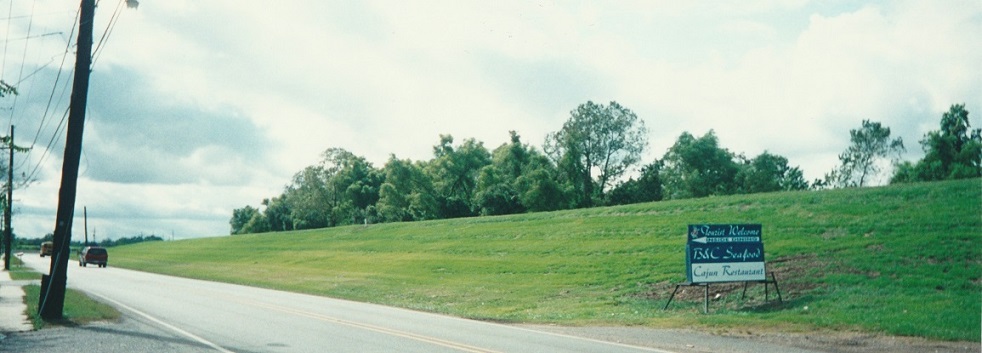
After taking that picture, I climbed up to the top of the levee, and by golly, there was actually a river out there!

Then I turned and took another picture, looking along the top of the levee, showing the road that runs along the top:
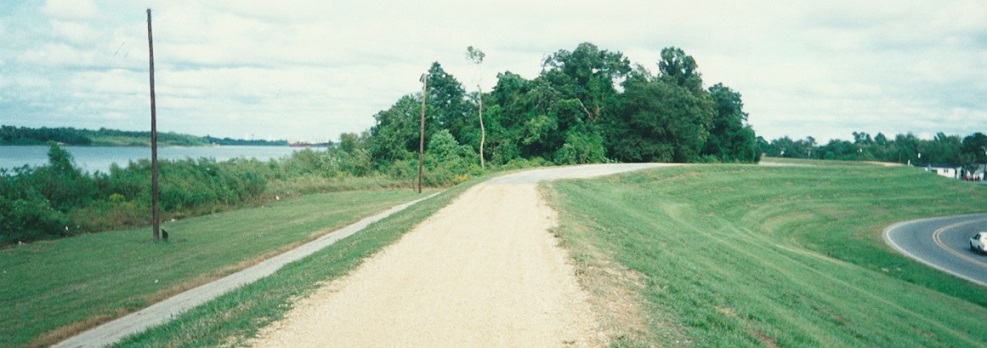
The next plantation we saw that day was another Creole plantation, called San Francisco. It's not a Spanish name, it's a corruption of a French name. The owner joked that he had spent every last cent on the place, and he was "sans francs," i.e., out of money. Anyway, we figured we had to see it, since we had come from there.
Here's the plantation house, with its characteristic bright colors. Uncharacteristically, however, the windows do not go down to the ground. It looks like the main entrance is on the ground floor, instead of the second floor, but that's misleading - this is actually the back of the house. Notice the levee beyond the house - the house, as always, faces the river.

Here's a close up view of one of the two water towers visible on either side of the house in the previous picture. Note the two pipes visible on the left side of the picture. The upper pipe drains rainwater from the roof into the storage tank; the lower pipe delivers water to the kitchen. I was impressed.
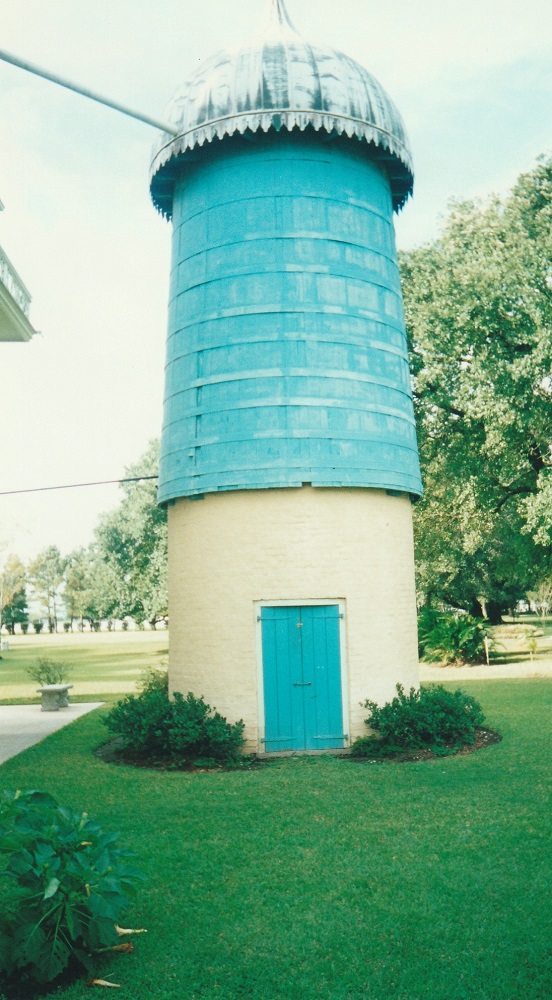
There was a gazebo on the plantation grounds:

... and several reconstructed outbuildings, including these, a slave quarters (left) and a schoolroom (right). Between them is a cauldron used for boiling down the syrup from the sugar cane. Note: the metal railings on the stairs going into each building are modern additions. But you knew that.

This next picture illustrates something that I saw over and over again as I drove along the river. There is a stretch of the River Road known as "Petrochemical Alley," because of the succession of factories along the road. And almost every one has some mechanism for delivering product to, and/or receiving raw materials from, ships on the River. As I drove, I would go underneath a continuous series of pipelines, conveyors, etc., stretching from the factories, over the road, over the levee, and out to the River. The land on which the San Francisco plantation is located is currently owned by an oil company; the custodians of the plantation site have an arrangement with the company to maintain the site. This picture shows a pipeline from the plant to the River.

We then drove back to N.O., and had dinner at an Italian restaurant called Adolfo's. This restaurant was not in the Quarter, but was just a few blocks away from the inn. Again, Todd recommended it. While we were there, I noticed a blind woman sitting at another table. When that woman and her companion got up to go, they came over to say hello, and ask about the dog. We endured this with some impatience, until we discovered that the woman knew Terry - she was a former client of the Department of Rehab!
We then went back to the inn, did some laundry, and went to bed.